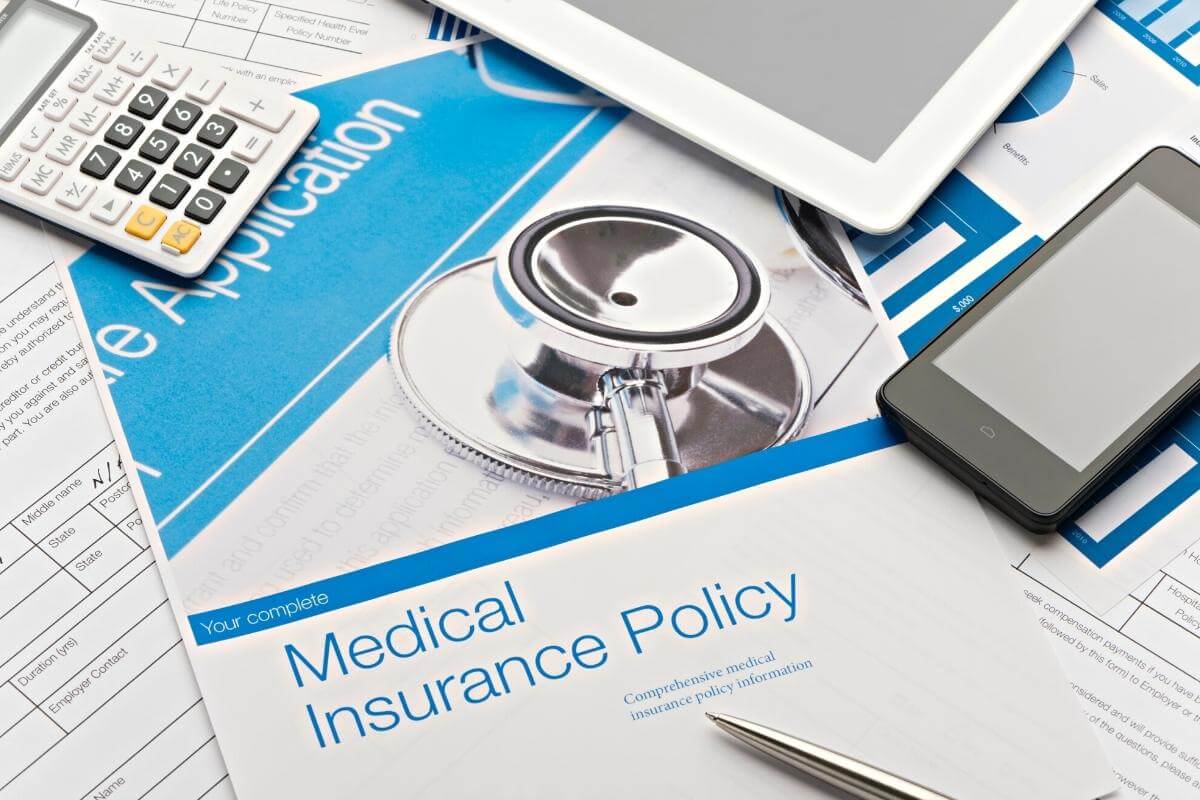Written by Marielle Gonzales
Contents
Urgent care clinics continue to develop at a breakneck pace as the healthcare environment evolves. Their appeal stems from their capacity to provide healthcare swiftly, inexpensively, and efficiently.
Between 2007 and 2016, the urgent care industry had a 1,725 percent rise in private insurance claim lines for urgent care services. Experts predict that the market will continue to grow, reaching $26 billion in 2023.
This blog post will cover all you need to know about the challenges associated with medical coding services and how urgent care is reimbursed.
How Is Urgent Care Reimbursed?

Healthcare reimbursement is the payments received by a hospital, healthcare provider, diagnostic facility, or other healthcare providers for providing patients with a medical service. A patient’s health insurance or a government payer covers all or a portion of the cost of treatment.
Depending on health plans, consumers may be liable for a portion of the cost. If a patient does not have health insurance, they will be responsible for the total cost of the medical bill.
Payment is made after a patient receives medical treatment, so the term “reimbursement” is used. When picking health insurance coverage and tending to healthcare, there are various things you should understand regarding healthcare reimbursement.
By establishing sound financial practices that begin at check-ins, you can increase your income while spending less on expensive collection methods.
Due to the walk-in nature of urgent care visits, most urgent care facilities do not need pre-registration. However, when a patient initiates an appointment, the receptionist or front-desk employee must collect basic billing information.
The following information is critical:
- Demographic data such as the visitor’s name, residence, birth date, and purpose for the visit
- The insurance company’s name, the primary care provider’s name, and the policy number
Ideally, registration data will contribute to creating an electronic health record (EHR). Providers and support personnel will collaborate on patient notes, health history, and treatment recommendations inside the EHR.
Learn more: Ask these 5 questions before outsourcing medical billing and coding.
What Is the CPT Code for an Urgent Care Visit?

Urgent care services are categorized similarly to physician office visits (CPT Codes 99201 to 99215). Most insurance companies will pay a flat-fee basis for treatments and other procedures done on the same day. Few carriers deliver urgent care facilities on a per-service basis, which is classified into three tiers.
Florida’s Blue Cross and Blue Shield (BCBS) is an ideal example of such reimbursements.
Current Procedural Terminology (CPT) Codes 99201 to 99202 and 99211 to 99212 are classified as Level I services. At the same time, CPT Codes 99203 and 99213 have a higher reimbursement rate than Level I and are classified as Level II services. CPT Codes 99204 to 99205 and 99214 to 99215 have a higher reimbursement rate than Level I and are classified as Level III services.
Just a few more details for coders about these three service levels:
- Level I / Triage Care (Minor Problems): When patients simply get evaluation and management services without diagnostic testing
- Level II / Intermediate Care (Moderate Problems): If injections and vaccines are delivered and E&M services.
- Level III / Complex Care (Severe Problems): IF IV infusion, sutures, and E&M therapies are administered.
See more information about: A Quick Guide to Medical Billing and Medical Coding Services
Urgent Care Coding and Billing Guidelines: Is It Cheaper to Go to the Doctor or Urgent Care?

If a person cannot contact their physician or needs treatment outside of regular business hours, they can go to an urgent care facility or a retail health clinic. They can find these walk-in clinics in pharmacies and retail stores.
A nurse practitioner or a physician assistant can attend to a patient with a mild illness and injury such as the common cold, the flu, or ear infections. Urgent care facilities employ doctors and can treat additional diseases.
Visiting a retail health clinic or an urgent care center is less expensive than going to the emergency room. But a patient must be prudent in choosing a facility covered by their insurance plan.
Without insurance, urgent care costs between $80 and $280 for a routine visit and between $140 and $440 for a more complex appointment. Without insurance, the typical cost of a doctor’s visit is between $300 and $600. However, this is not to say that urgent care is always the less expensive alternative for getting treatment.
Urgent Care Coding and Billing Guidelines: How Does Medical Coding Relate to Reimbursement?

Medical reimbursement and coding are critical components of the healthcare billing cycle.
Medical coding converts a patient’s billable medical services into medical reimbursement codes that insurance companies use to pay each claim accordingly. Specialists in reimbursement and coding study the ins and outs of biology, physiology, anatomy, and medical language.
They must grasp how the body functions and which diagnoses are associated with each bodily component. And they learn to classify those diagnoses using the correct medical reimbursement codes so that insurance companies pay claims accurately.
People interested in medical billing and coding ask if the tasks are difficult to learn. Students enrolled in medical reimbursement, and coding courses can quickly grasp the fundamental ideas if they put in the work.
Urgent Care Coding and Billing Guidelines: How Are Doctors Reimbursed?
Insurance companies and government payers pay healthcare professionals through a payment system. After a patient receives medical care, their provider will submit a bill to whoever is responsible for paying for their medical expenses.
The price invoiced is determined by the nature of the treatment and the amount agreed upon by Medicare or the health insurance to pay for that service. You can search out the cost of an operation using CPT. Private insurance firms directly contract with providers and hospitals to determine payment rates.
Certain hospitals and providers refuse to take patients whose insurance does not cover them adequately—unless the situation is an emergency.
Urgent Care Coding and Billing Guidelines: What Are the Hardest Billing Challenges Urgent Care Providers Face?

The urgent care business in the United States has encountered several new financial difficulties due to the COVID-19 epidemic. To successfully traverse new and uncharted ground, urgent care clinics, like most businesses, have had to pivot and adjust their business processes and workflows. This is particularly true in the area of COVID-19 invoicing and payment.
Three of the Most Serious Billing Issues Facing Urgent Care Providers
1. Reimbursement for Uninsured and Undocumented Patients’ Testing and Treatment
As a result of the pandemic’s economic consequences, the United States’ unemployment rate increased to levels comparable to the 1930s. In April 2020, the unemployment rate was almost 15%.
Many people and their families were uninsured due to the employment-based nature of their healthcare coverage. However, unemployed people have bounced back ever since, as the rate has considerably gone down at 4%.
In April, the Health Resources and Services Administration (HRSA) introduced the COVID-19 Uninsured Patient Portal to compensate clinicians for treating and vaccinating uninsured COVID-19 patients at Medicare rates. The initiative was critical during the first year of the pandemic since it ensured that more people could get necessary treatment despite their lack of insurance.
2. Continual Revisions to Healthcare Rules and Codes
Throughout the pandemic, healthcare policy and coding standards were constantly changing. As part of these ongoing developments, new CPT codes for recording and invoicing pandemic-related visits were introduced. Healthcare providers had to implement telehealth practices to limit risk via remote patient testing management.
Retraining and modifying current systems to include new codes needed time that urgent care clinics could not afford as visit volume grew. Additionally, criteria differed throughout the continuum. Different payers have varying telemedicine policies, resulting in contested claims across the sector and increased workload for provider offices.
3. Patient Confusion over COVID-19 Care Coverage
Throughout the pandemic, urgent care clinics faced the impact of patient confusion. Patients were fearful and apprehensive of so many things—virus exposure, telehealth alternatives, testing sites, test eligibility, and COVID-19 coverage.
Along with addressing the increasing demand for testing, clinic personnel was confronted with more inquiries than ever before as patients sought clarification and reassurance from their local clinicians.
While the government verified that COVID-19 testing would be free for everyone, some restrictions were not clearly explained to consumers, including changes in standards for routine screenings versus testing people who have been exposed to the virus.
As a result, patients expected free COVID-19 testing and treatment, so they went to urgent care clinics. But some were still billed according to their insurance coverage, resulting in billing problems.
Discover: How to choose the right BPO Company
The Bottom Line
As the urgent care market changes in response to the COVID-19 pandemic, urgent care providers must double down on their efforts to ensure healthy and sustainable revenue cycles despite the shifting environment.
Urgent care clinics have become a popular and necessary addition to the American healthcare system. The industry is growing rapidly, and medical coding services are becoming increasingly important.
However, urgent care clinics still have to face many challenges when it comes to reimbursement. We hope this blog post has helped you understand the complex world of medical coding and reimbursement in the urgent care industry.




